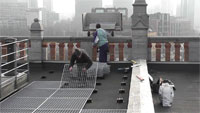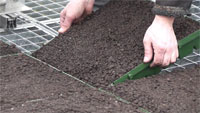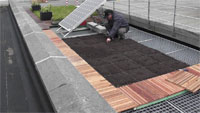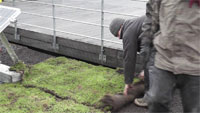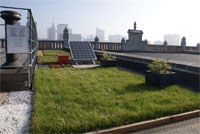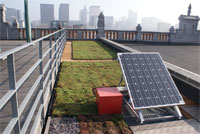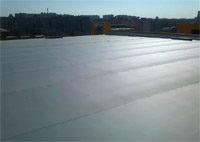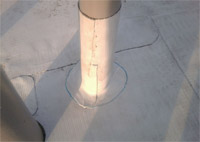The device of flat roofs of various types
The popularity of flat roofs is justified. After all, they are cheaper, and also allow you to effectively use the upper part of the house. In this article we will show the device of a flat roof, while we will be repelled from whether it will be operated or not. The application of certain materials and technologies depends on this.

Content:
What is remarkable for a flat roof and what are its features
Flat roofs have a number of advantages over traditional pitched roofs.
In particular:
- Material is saved (after all, their area is much smaller than that of pitched ones).
- Save heat insulator, waterproofing material and vapor barrier film.
- Less time is spent on installing a flat coating. Lower and the cost of installation work.
- A roof of a flat type will not be swept away by a strong wind, and sometimes a hurricane.
Use this type of roof for residential buildings, office buildings, industrial buildings. Roofs are not made completely flat - it is necessary to drain the precipitation somewhere. As a rule, a slope of about 3 degrees is made for this. The slope can be done with a sand-cement or expanded clay-cement screed.
The base for a flat roof is usually made of reinforced concrete slabs or sometimes profiled steel is used as the base. Concrete coatings can be either hollow or monolithic. Well, the roof covering itself is done in several layers. How many of these layers and what materials they will be made of depends on what type of flat roof. Next, we will consider all possible types of flat roofs.
The difference between exploited and non-exploited flat roofs
There are two main types of flat roofs:
- Exploited;
- Not exploitable.
#1. An exploited roof means that you can freely climb onto the roof of such a house, as well as place something massive on it. For example, a green zone with a flower garden, a swimming pool, an outdoor cafe, and parking for cars can be equipped there. In general, this space can be used for a variety of needs. Often the operation of the roof occurs year-round. Naturally, such a roof is simply obliged to have a sufficiently strong base. To do this, under the waterproofing layer, which should not be pressed through, there is a very rigid and strong base capable of withstanding significant loads.
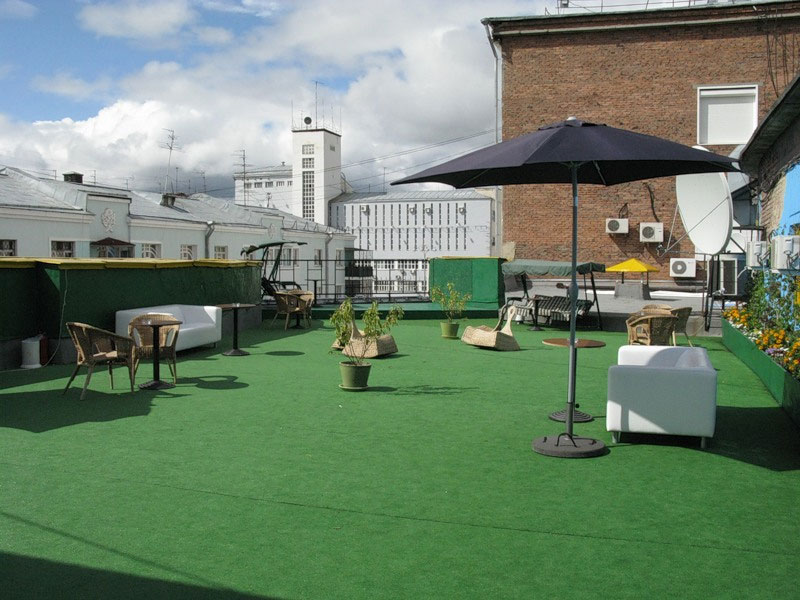
An example of a flat exploited roof on which a terrace is built.
#2. Well, the second option involves such a roof, which you need to climb only as necessary, in particular for repair. For the device of this roof, a less rigid base, including a profiled sheet, can be used.
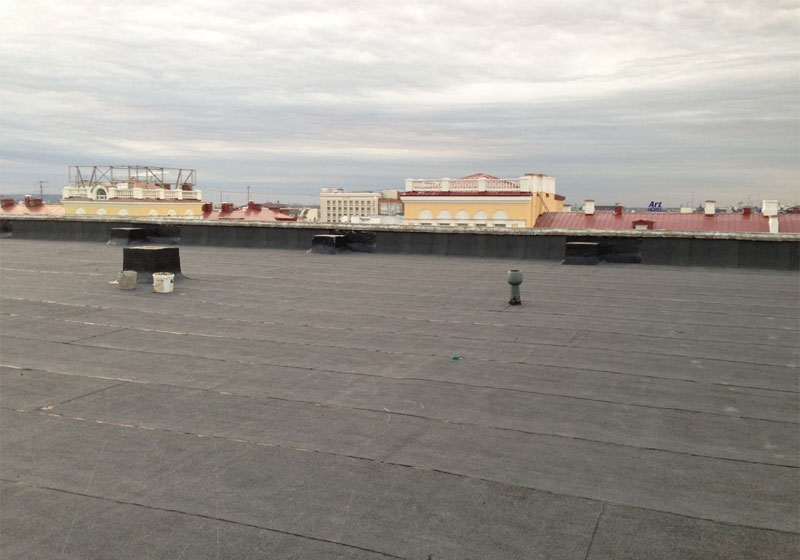
An example of a flat, non-exploitable roof.
The device of various types of flat roofs
Classical or as they are also called traditional flat roofs consist of a concrete base on which vapor barrier is laid. It is designed to protect the insulation from moisture that can penetrate from the inside of the room. The vapor barrier is produced using a fiberglass-polymer membrane reinforced with fiberglass or using a special vapor barrier film. The vapor barrier is laid in such a way that from the edges of the roof it rises vertically to the height of the insulation. 1 - 2 layers of insulation are laid on top of the vapor barrier, which is covered with a carpet of bituminous surfaced materials.
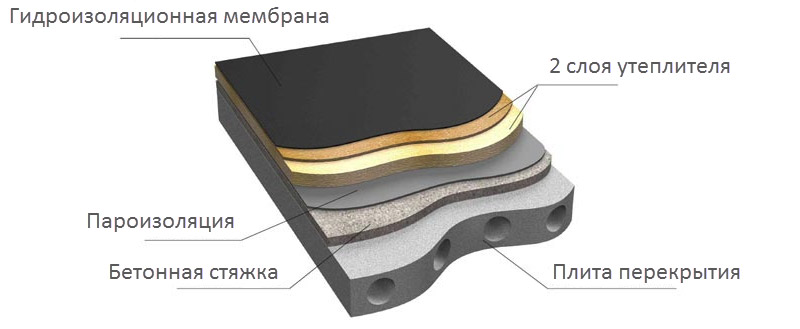
For more details on the device and the location of the layers of a flat roof, see the diagram below:
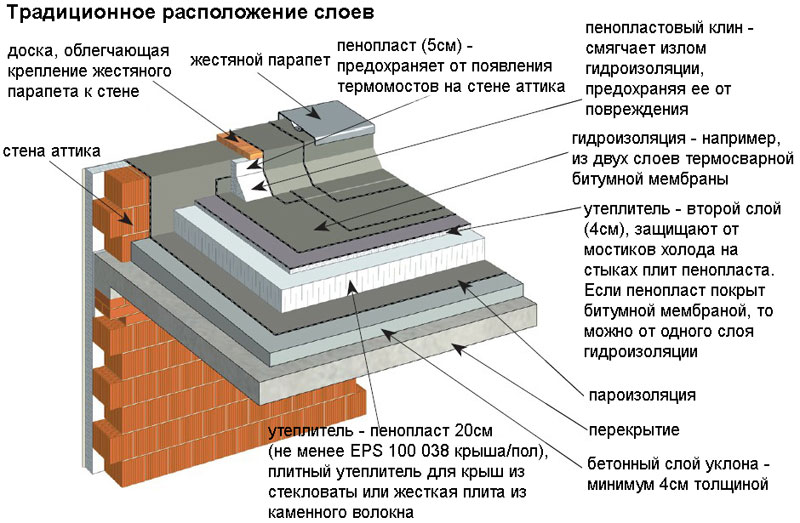
Inverse roof device
A little earlier (10-15 years ago), flat roofs had a significant drawback - the waterproofing layer laid last, quickly destroyed. And snow with rain and hail contributed to this, and heat with frost, and the evil ultraviolet rays of the sun. And then they came up with an inversion roof, devoid of this drawback.
The technology for constructing a flat roof of this type is as follows: they put waterproofing on concrete, then heat insulation (it is optimal to use extruded polystyrene foam that does not absorb moisture). The next are geotextile cover and drainage. The top layer is protective and is often made loose.
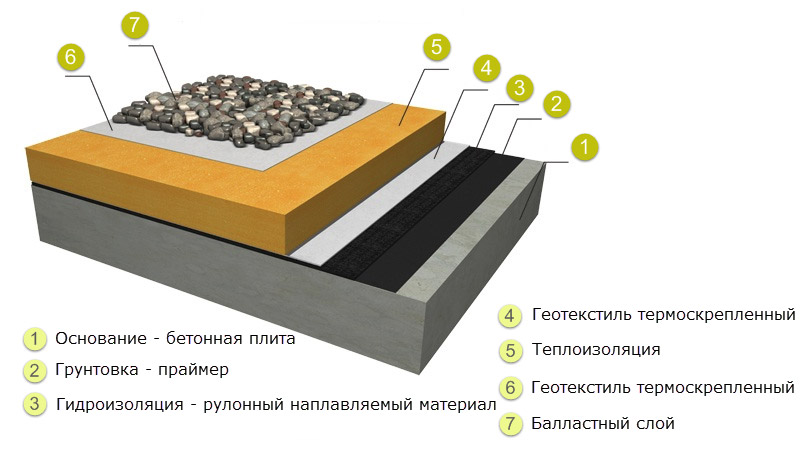
Roofing cake of an inverse flat roof.
Such technology provides the following benefits:
- Now the waterproofing is well hidden, so it is not so easy to destroy it.
- Since the insulation is located on top, condensation does not form.
- If something is damaged and repair is required, the insulation boards are easy to remove and then put back into place.
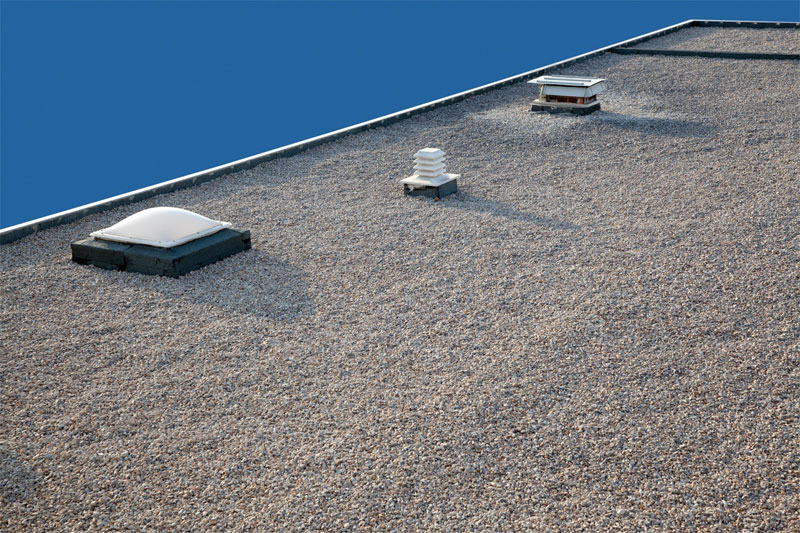
This may look like a simple inverse flat roof in a finished form.
Breathing device
It is no secret that it is the excessive humidity of the heat insulator that greatly affects the protective properties of the roof. Because of this, bubbles and cracks can easily form on it, especially in summer, when the heater, heating up from the sun, actively evaporates water. In addition to insulation, moisture may be present under the layers of the old roof, in a concrete base, screed. As a result, in the absence of ventilation, the roof covering may peel off from its base.
The invention of the "breathing" roof helped get rid of this scourge - the moisture in it can freely evaporate, going outside. The flat roof device used here from surfaced roll materials gives excellent tightness and a long service life. Between the strips of bitumen mastic is a layer of insulation, and the roof is ventilated by roofing aerators, which are installed on its surface, at the rate of 1 piece per 50 m2.
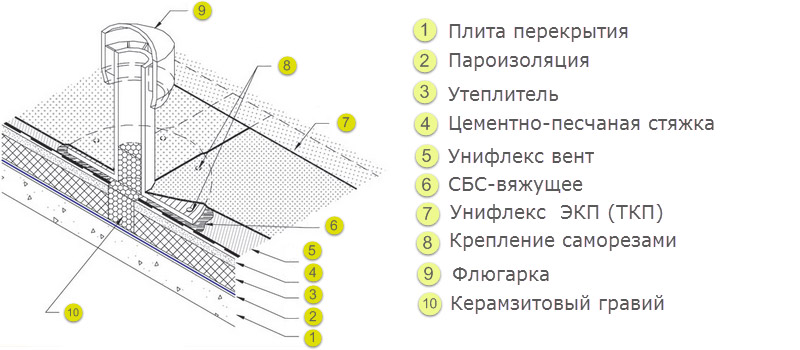
Roofing pie flat breathing roof.
Pros of this type of coating:
- When mounting such a roof, there is no need to remove the old flooring (from this, by the way, leaks in concrete may appear). By fusing the old coating, on the contrary, we strengthen the hydroprotection.
- The second layer (after the old coating) for leveling the surface gives an excellent outflow of moisture. After all, this layer is laid with a slope.
- You can use this method both in new construction and in the repair of an old building.
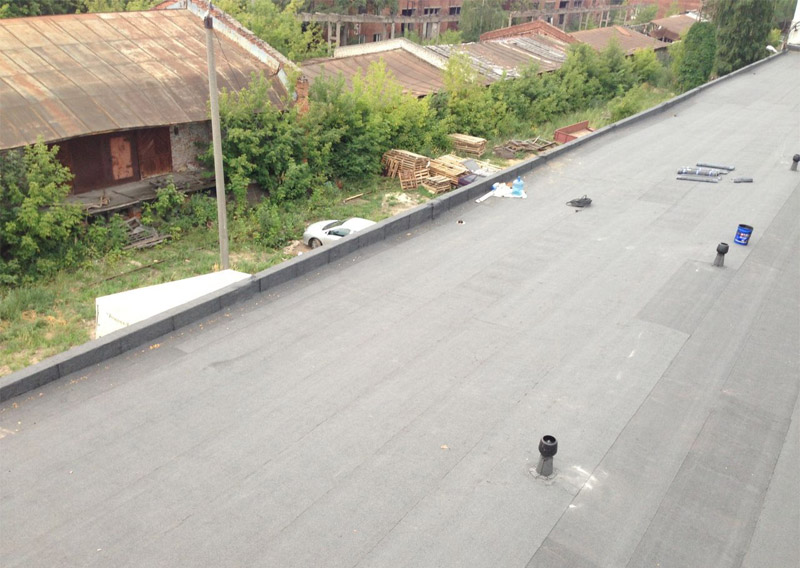
An example of a ventilated flat roof.
Roof device
There is less and less space in modern cities, so an extra parking space or an outdoor rooftop cafe is an excellent way out. Well, in your own house on an operated roof you can equip a cozy place to relax.
As for technology, a standard concrete roof is characterized by the presence of a reinforced concrete base on which a vapor barrier lies. Next come the heat insulator and hydroprotection. And at the very top there is a terrace covering, which is made very durable. Most often, paving slabs are used for this, under which they put a sand cushion (plastic holders can be used instead).
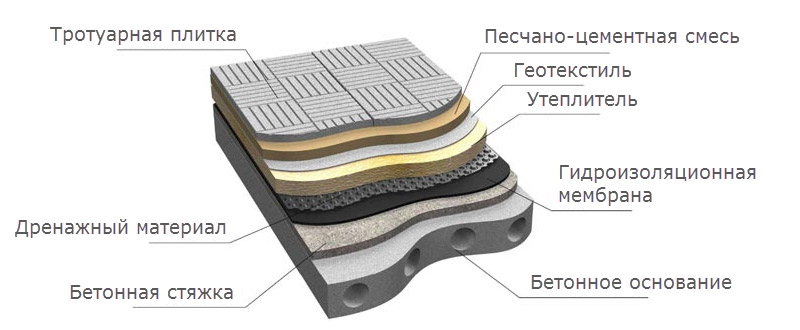
Roofing pie flat exploited roofing.
The advantages of an exploited roof:
- Additional space does not fit anyone, and you can use it as you like.
- Having realized an interesting design idea, you can get a beautiful corner on the roof where you can relax, relax in silence, take a sunbath.
Green roof device
In our "stone jungle" people are sorely lacking greenery. This disadvantage is fully compensated by a roof of this type. She can become a pretty trimmed lawn, rows of bright flower beds, and sometimes a whole public garden.Just keep in mind: decide that on the roof there will be a garden or a lawn, you need in advance - even at a time when the house is being designed.
Technology can be said to be common for flat roofs. The main thing is to make high-quality and reliable protection against water. For a device of this type of roof, a waterproofing layer is placed on the reinforced concrete, and it is covered with a heat insulation layer on top (in this case, nothing has been invented better than extruded polystyrene foam). Next - geotextiles and drainage, which is gravel or gravel. After that, the drainage is closed with another layer of geotextile - so our soil will not be washed away by rain. At the very end, the earth is poured and plants are planted.
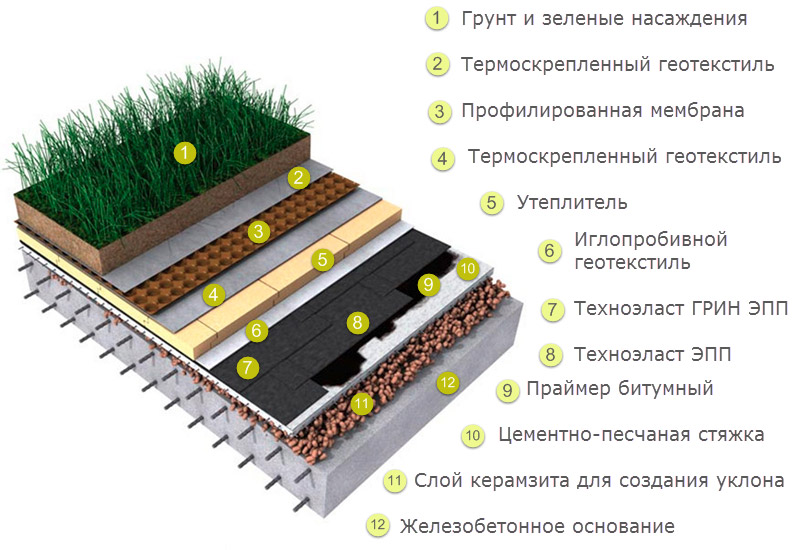
The structure of the cake is a flat green roof.
The advantages of such a roof are immediately noticeable - such a green oasis and health will add, and restore peace of mind. The main thing is to make sure that professionals build this oasis, and only the highest quality materials are used. Otherwise, the repair will cost a pretty penny.
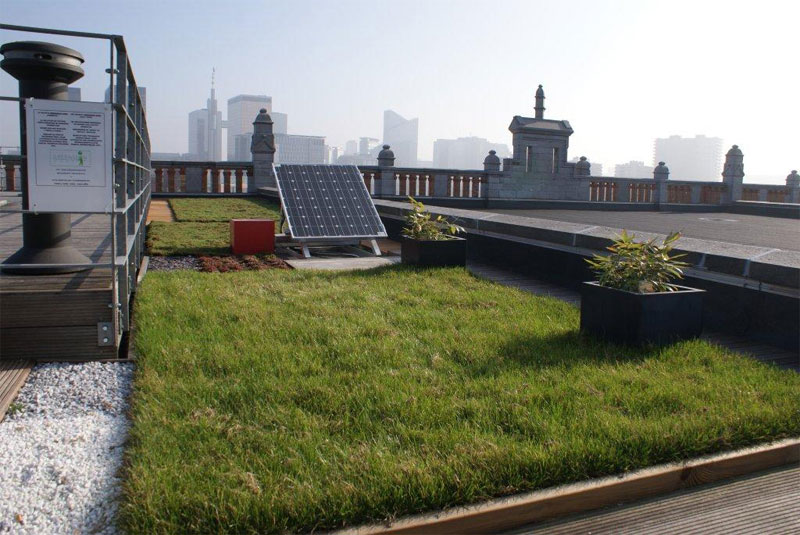
Here is a wonderful view can have a green flat roof. Photo: www.buzon-opora.ru
Photo of the roof greening process:
Roofing device made of PVC and EDPM membranes
A polyvinyl chloride (PVC) membrane is good because, thanks to its use, the need for an additional waterproofing layer is eliminated. And it also has a wonderful quality - thermoplasticity. This means that its seams can easily be sealed with hot air. The EDPM membrane is made of synthetic rubber and is resilient, durable and UV resistant.
As a basis for membrane types of roofing, both reinforced concrete floor slabs and metal profiled sheets can be used. Well, thermal insulation is best done from mineral wool. To do this, either hard plates of this material are taken, or combined. The polyvinyl chloride membrane is installed directly on the base through a layer of insulation (it must be laid separately). Fastening takes place in those places where seams are formed between the rolls of material. Fasteners are used special.
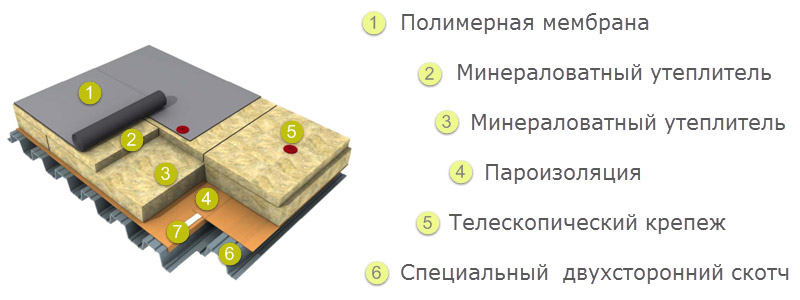
The structure of the membrane membrane pie.
The advantages of a membrane roof:
- Both types of membranes (both PVC and EDPM) last a very long time, while easily transferring any loads.
- Manufacturers produce large-width membranes, which makes it easy to pick up a roll of material for a complex roof. There will be very few seams.
- Such a roof tolerates frost and heat, too.
- Laying this material is not difficult - because it is very light. Therefore, the base is not required to be strengthened.
- It is easy to repair polyvinyl chloride membranes, and after repair their properties do not deteriorate at all.
Membrane roof photo:

